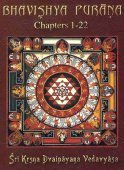Sarya, Sharya, Śarya, Śaryā, Sārya: 9 definitions
Introduction:
Sarya means something in Hinduism, Sanskrit, biology. If you want to know the exact meaning, history, etymology or English translation of this term then check out the descriptions on this page. Add your comment or reference to a book if you want to contribute to this summary article.
The Sanskrit terms Śarya and Śaryā can be transliterated into English as Sarya or Sharya, using the IAST transliteration scheme (?).
In Hinduism
Purana and Itihasa (epic history)
Source: Cologne Digital Sanskrit Dictionaries: The Purana IndexSarya (सर्य).—(sarpa?)—a son of Yātudhāna.*
- * Brahmāṇḍa-purāṇa III. 7. 90, 97.

The Purana (पुराण, purāṇas) refers to Sanskrit literature preserving ancient India’s vast cultural history, including historical legends, religious ceremonies, various arts and sciences. The eighteen mahapuranas total over 400,000 shlokas (metrical couplets) and date to at least several centuries BCE.
Biology (plants and animals)
Source: Google Books: CRC World Dictionary (Regional names)Sarya in India is the name of a plant defined with Smilax elegans in various botanical sources. This page contains potential references in Ayurveda, modern medicine, and other folk traditions or local practices It has the synonym Smilax elegans subsp. glaucophylla (Klotzsch) Noltie (among others).
Example references for further research on medicinal uses or toxicity (see latin names for full list):
· Enumeratio Plantarum Omnium Hucusque Cognitarum (1850)
· Numer. List (5117)
· Monographiae Phanerogamarum (1878)
· Flora Mexicana. (1894)
· Bot. Erg. Reise Pr. Waldemar (1862)
· Edinburgh Journal of Botany (1994)
If you are looking for specific details regarding Sarya, for example chemical composition, side effects, health benefits, diet and recipes, extract dosage, pregnancy safety, have a look at these references.

This sections includes definitions from the five kingdoms of living things: Animals, Plants, Fungi, Protists and Monera. It will include both the official binomial nomenclature (scientific names usually in Latin) as well as regional spellings and variants.
Languages of India and abroad
Sanskrit dictionary
Source: DDSA: The practical Sanskrit-English dictionaryŚarya (शर्य).—a. Ved. Hurtful, injurious.
-ryaḥ 1 An enemy.
2) An arrow.
--- OR ---
Śaryā (शर्या).—
1) Night.
2) A finger.
3) An arrow (Ved.).
--- OR ---
Sārya (सार्य).—a. That which may be dropped (in pronunciation).
Source: Cologne Digital Sanskrit Dictionaries: Shabda-Sagara Sanskrit-English DictionaryŚaryā (शर्या) or Śaryyā.—f.
(-ryā) Night. E. śṝ to injure, yat aff.
Source: Cologne Digital Sanskrit Dictionaries: Benfey Sanskrit-English DictionaryŚaryā (शर्या).—i. e. śṛ10 + yā, f. Night.
Source: Cologne Digital Sanskrit Dictionaries: Cappeller Sanskrit-English DictionaryŚarya (शर्य).—[masculine] arrow, dart; [feminine] ā reed, arrow, p matting of reed (on the Soma-strainer).
Source: Cologne Digital Sanskrit Dictionaries: Monier-Williams Sanskrit-English Dictionary1) Śarya (शर्य):—[from śara] a m. an arrow, missile, [Ṛg-veda] ([Sāyaṇa] ‘a fighter, warrior’)
2) Śaryā (शर्या):—[from śarya > śara] f. a cane, shaft, arrow, [Ṛg-veda] ([Nirukta, by Yāska])
3) [v.s. ...] membrum virile (?), [Ṛg-veda x, 178, 4]
4) [v.s. ...] night, [cf. Lexicographers, esp. such as amarasiṃha, halāyudha, hemacandra, etc.]
5) [v.s. ...] a finger, [Naighaṇṭuka, commented on by Yāska; Nirukta, by Yāska]
6) [v.s. ...] ([according to] to some) a porcupine (cf. śalya), [Monier-Williams’ Sanskrit-English Dictionary]
7) [v.s. ...] [plural] wicker-work (of the Soma sieve), [Ṛg-veda]
8) Śarya (शर्य):—[from śara] n. idem, [ib.]
9) [v.s. ...] mf(ā)n. hostile, injurious, hurtful, [Monier-Williams’ Sanskrit-English Dictionary]
10) b śaryaṇa, śaryāṇa See p. 1056, col. 3, and p. 1057, col. 1.
11) Sārya (सार्य):—[from sāra] a mfn. that which may be dropped or omitted (in pronunciation), [Māṇḍūkī-śikṣā]
12) b See p. 1208, col. 1.
Source: Cologne Digital Sanskrit Dictionaries: Yates Sanskrit-English DictionaryŚaryā (शर्या):—(ryyā) 1. f. Night.
[Sanskrit to German]
Sanskrit, also spelled संस्कृतम् (saṃskṛtam), is an ancient language of India commonly seen as the grandmother of the Indo-European language family (even English!). Closely allied with Prakrit and Pali, Sanskrit is more exhaustive in both grammar and terms and has the most extensive collection of literature in the world, greatly surpassing its sister-languages Greek and Latin.
See also (Relevant definitions)
Starts with: Sharyahan, Sharyana, Sharyanavant, Sharyanavat, Sharyata, Sharyataka, Sharyati, Sharyativana, Sharyattu.
Ends with (+21): Aksharya, Amatsarya, Anantamatsarya, Anubhavadarsharya, Anusamsarya, Apasarya, Ausharya, Avasamatsarya, Bhasharya, Devavilasarya, Dharmamatsarya, Durmatsarya, Ghalaghasariya, Gosharya, Kalanusarya, Katakasariya, Keshariya, Ksharya, Kushalamatsarya, Labhamatsarya.
Full-text: Upasarya, Sharyahan, Parasharyayana, Sharyya, Pratisarya, Gosharya, Nihsarya, Sarayu, Ankuray, Abhiprasri, Prasarya, Utsarya, Yuvati, Ishu, Han, Kalanusari.
Relevant text
Search found 3 books and stories containing Sarya, Sharya, Śarya, Śaryā, Sārya; (plurals include: Saryas, Sharyas, Śaryas, Śaryās, Sāryas). You can also click to the full overview containing English textual excerpts. Below are direct links for the most relevant articles:
Rig Veda (translation and commentary) (by H. H. Wilson)
The Practice Manual of Noble Tārā Kurukullā (by Dharmachakra Translation Committee)
Chapter 7 < [Appendix - Sanskrit Text]
Sri Rama: The Highest Ideal of Indian Manhood < [January 1970]
Related products
